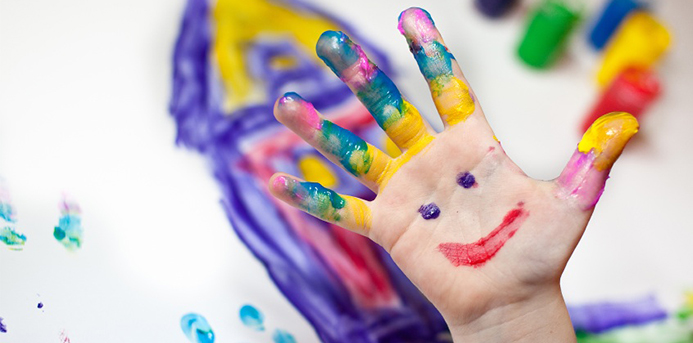The words ‘children’ and ‘creative’ naturally go together.
Perhaps that’s why it’s concerning to read recent reports about the decline in the creative abilities of American children. It turns out that creativity involves more than just doing a craft.
Creativity is the ability to generate unique ideas that are expressed in a variety of different ways, such as through the arts or in problem solving; creative individuals are able to see the richness of the world around them. So how do parents go about raising and encouraging creative kids?
Joyce Elias, an Evanston artist and set designer who teaches art to children in her studio, suggests:
- Keeping things unstructured. Provide lots of time for free play, preferably outdoors.
- Exposing children to different art forms. With Chicago so close, there are a multitude of opportunities to see creativity in all its different forms.
- Providing space and materials. Along with basic art supplies, collect recyclables, which can be made into inventions and other projects. Turning an item designed for one use into something completely different is a great creative exercise.
- Playing games together, and not just packaged board games… make your own!
Chuck Kent, creative director of his Evanston-based business Creative on Call and also a singer-songwriter (www.samesamecd.com) finds that creativity in his children starts with his own. His goal is to let them open up and breathe in for themselves a sense of their own possibilities. To achieve this goal, he focuses on:
- Modeling risk taking.
- Dropping pre-conceived notions of what kids can and can’t do creatively.
- Expressing his creative enjoyment.
As a homeschooler, I am always on the lookout for ways I can help to inspire my children. Some things we have done to help build creativity are:
- Limiting screen time. Children can become too used to having ideas fed to them through images on a screen. Without this crutch, my children have to come up with activities using their imagination.
- Providing high quality materials. Cheap kids’ art supplies can be frustrating to use and often the results are disappointing. Real materials are more satisfying and feel important.
- Practicing divergent thinking, the practice of finding many solutions to a problem or uses for an item. We find this makes for great dinner table or car ride conversation.
- Making creativity enjoyable. We make creating things together as a family fun.

